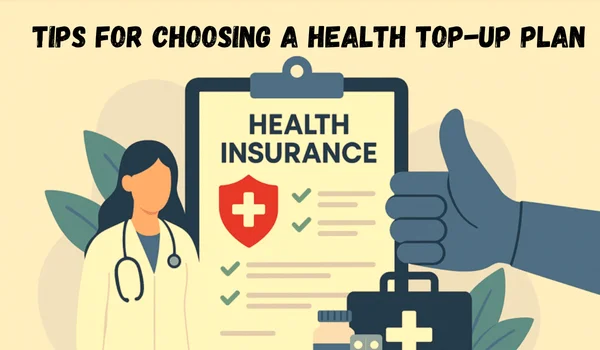Medical costs are rising faster than ever, and even a strong base policy sometimes is not enough to cover large hospital bills. That is where top-up health insurance comes in. It acts as an extra layer of protection over your existing health plan, kicking in when your medical expenses go beyond a certain limit.
For families and individuals looking to strengthen their coverage without paying sky-high premiums, a top-up plan can be a smart move. Here is how to choose one wisely.
Top 5 Tips to Choose a Health Top-Up Plan Wisely

Understand the Deductible Clause
The deductible is the amount you pay out of pocket before your top-up health insurance starts covering the rest. Consider it as the threshold. Your main policy handles expenses up to a certain point, and once you cross that limit, the top-up plan steps in.
For example, if your deductible is ₹3 lakh and your hospital bill totals ₹5 lakh, your top-up policy will cover ₹2 lakh. Choosing a higher deductible usually means paying a lower premium, but it also means you will need to handle more initial costs. The right balance depends on your current base cover and comfort level with out-of-pocket spending.
Check Coverage and Room Rent Limit
Before finalising your top-up policy, look closely at what it covers. Ideally, your top-up health insurance should offer benefits that complement your base policy, including room rent, ICU charges, pre- and post-hospitalisation and daycare procedures.
Some health insurance plans come with sub-limits on room rent or certain treatments, which can reduce claim payouts. Always ensure these limits align with your lifestyle and the kind of hospital you prefer for treatment and other requirements.
Align it With Your Base Policy
To avoid confusion or claim delays, your top-up should align well with your existing health insurance plans. Using the same insurer for both policies often ensures smoother coordination during a claim, as the company has a full view of coverage details and medical history.
If you choose a different insurer, make sure the deductible and coverage terms don’t overlap or conflict. Consistency between policies saves time and paperwork when it matters most.
Compare Premiums Vs Benefits
Cheaper is not always the best when considering health insurance plans. Instead of focusing on the premium, compare overall benefits, from hospital networks and claim settlement ratios to restoration benefits and renewal flexibility.
Online comparison tools can help you quickly evaluate multiple insurers side by side. Look for plans that provide broad hospital coverage, hassle-free claim processes and reliable post-sale support.
Buy Early and Stay Covered
It is always better to buy a top-up health insurance plan early rather than waiting until you are older or have health complications. Buying young not only means lower premiums but also helps complete the waiting period sooner.
Once the waiting period is over, you will be able to leverage complete protection for years to come without worrying about exclusions.
Conclusion
A well-chosen top-up health insurance plan is an affordable way to expand your medical safety net and stay protected from unexpected hospital bills.
By understanding deductibles, checking coverage details and aligning it with your existing health insurance plans, you can make a smart and cost-effective decision. Reliable insurers like TATA AIG offer flexible top-up options that help you have a solid health cover.

Hello, I’m Kapil Kumar, a seasoned SEO expert and blogger at WinnersList.in. My mission is to spotlight exceptional individuals and organizations across various domains. Through curated lists, profiles, and inspiring stories, I aim to celebrate outstanding achievements and inspire the next generation of champions. Join me in this journey.
